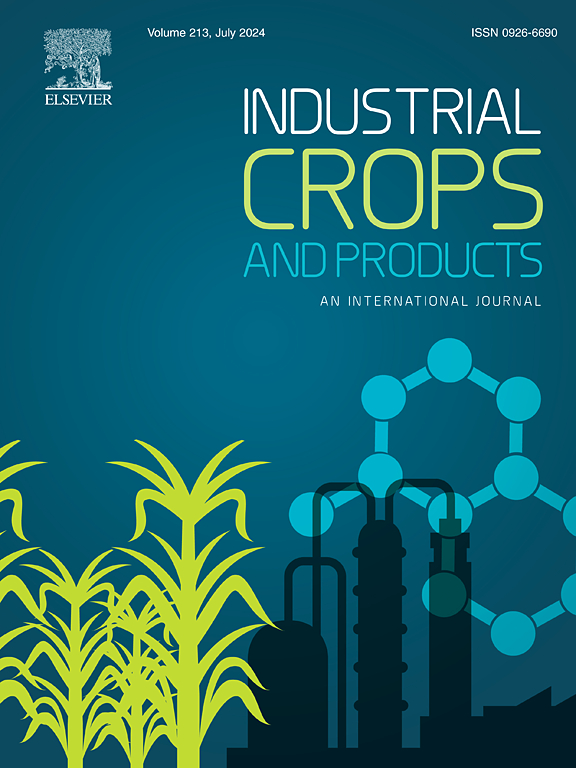Preparation of chitosan/peanut shell nano-lignocellulose (CS/NLC) composite film and its preservation effect on cherry tomato and blueberry
IF 5.6
1区 农林科学
Q1 AGRICULTURAL ENGINEERING
引用次数: 0
Abstract
The production of high-performance natural polymer coating preservation materials is a great challenge for fruit and vegetable packaging. In this study, nano-lignocellulose (NLC) was separated from the peanut shell by ball milling assisted deep eutectic solvent (DES), and the peanut shell NLC and chitosan (CS) were blended and cast to prepare CS/NLC composite film. The amount of NLC (4 wt%) was explored to obtain the composite film with the best performance, and the fresh-keeping effect of composite film on cherry tomato and blueberry was evaluated. The results showed that adding 4 % NLC to the CS film (CS/NLC-4 %) significantly improved the mechanical and barrier properties of the composite film. The tensile strength (TS) and elongation at break (EAB) reached 62.31 MPa and 66.24 %, respectively, which were 64.58 % and 277 % higher than pure CS film, respectively. At the same time, compared with pure CS film, the water vapor permeability (WVP), oxygen permeability (OP), and carbon dioxide permeability (CDP) decreased by 22.4 %, 39.1 %, and 19.8 %, respectively. Further characterization showed that the interaction between peanut shell NLC and CS molecules occurred. The addition of NLC did not significantly change the CS film’s functional group and thermal stability, and its crystallinity decreased. After the combination of CS and NLC, the surface of the CS film was interwoven with the nanofibers, forming a network of interwoven gaps and patches of multiple aggregating fibers. The results of fruit and vegetable coating preservation showed that CS/NLC-4 % coating treatment significantly reduced the quality loss of cherry tomatoes (12.06 %) and blueberries (20 %) in the later storage stage, improved the hardness of fruits and vegetables, and reduced the spoilage rate. After storage at 4℃ for 21 days, the spoilage rate of cherry tomato coated with CS/NLC-4 % decreased by 28.57 % and 57.14 % compared with uncoated and CS coated groups, respectively, while that of blueberry coated with CS/NLC-4 % decreased by 33.33 % and 66.66 %, respectively. Regarding the color measurement, the lightness (L value) and redness-blueness (a value) of CS/NLC-4 % coated cherry tomatoes did not change significantly until the end of storage (p < 0.05), and the change of ∆E value was minimal. The CS/NLC-4 % coating better delayed fruits’ ripening, aging, and water loss, thereby maintaining their luster and freshness and improving the storage capacity of fresh fruits and vegetables. This study provides a simple method for preserving fruits and vegetables based on nanocellulose coating.

求助全文
约1分钟内获得全文
求助全文
来源期刊

Industrial Crops and Products
农林科学-农业工程
CiteScore
9.50
自引率
8.50%
发文量
1518
审稿时长
43 days
期刊介绍:
Industrial Crops and Products is an International Journal publishing academic and industrial research on industrial (defined as non-food/non-feed) crops and products. Papers concern both crop-oriented and bio-based materials from crops-oriented research, and should be of interest to an international audience, hypothesis driven, and where comparisons are made statistics performed.
 求助内容:
求助内容: 应助结果提醒方式:
应助结果提醒方式:


